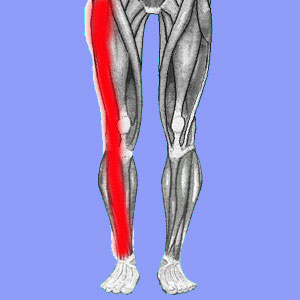
Idiopathic sciatica describes pain, tingling, numbness and weakness in the lower back, buttocks and legs, which has not been positively identified as coming from a verified spinal source. This scenario is rather common, with many patients not being able to achieve an accurate diagnosis of why they have pain.
Idiopathic pseudo-sciatica may be diagnosed when there are definitely no spinal sources responsible for enacting the symptoms, yet a chronic expression is present. In these circumstances, no structural or nonstructural cause has been verified as the source process for sciatica to occur.
This discussion centers on sciatica pain syndromes that remain undiagnosed.
Ischemic Cause of Sciatica
Idiopathic means that the actual cause is unknown. This verdict is often pronounced because many care providers do not have intimate knowledge of one of the more enigmatic of all potential sciatica causes: oxygen deprivation.
Some patients with otherwise idiopathic lower back pain are actually suffering from oxygen deprivation of the sciatic nerve and surrounding musculature. This process is nearly invisible and leaves barely any evidence of its existence, except for trace elements in the nuclei of affected cells.
Ischemia is the source of many painful conditions throughout the body, but is rarely correctly diagnosed by medical science, since it is often linked to a psychosomatic causation and therefore defies the generally Cartesian philosophy of modern healthcare. However, it must be noted that ischemia can also be enacted by circulatory or disease processes, besides the more common mindbody source detailed above.
Idiopathic Sciatica Alternatives
It is possible that sciatica symptoms which do not come from a spinal source might be the result of sacroiliac pain conditions or piriformis syndrome. However, these diagnoses, just like all the spinal sources, often act as mere scapegoats on which to blame pain, when in fact, the symptoms are not related to the suspected anatomical source. A good rule of thumb says that patients who have not enjoyed lasting and considerable relief from several seemingly appropriate therapies should consider the idea that their pain might have been misdiagnosed.
Remember, anatomically-induced pain typically resolves with indicated treatment. If this has not occurred and you continue to suffer, you might want to investigate an alternative sciatica treatment.
Idiopathic Sciatica Problems
Remember also that many other conditions might cause sciatica. Varicose veins, muscle imbalances, diabetes and various diseases can all affect the neurological tissue in the buttocks, legs and feet. This is why it is so crucial to provide your doctors with a complete picture of your general health in order to better your chances of symptomatic correlation to the true causative process.
Never forget, doctors are often so focused on symptoms, that they might over-compartmentalize the body and will not link specific symptoms to a more general health issue. I see this all the time.
In finale, the word idiopathic is another way for a doctor to tell you that they do not know what is causing your pain. This is fine. I would rather them tell the truth, then to fabricate some story about how a coincidental structural concern is responsible, then go about treating the innocent scapegoat ineffectively for years at the cost of your hope, your health and all your money.
However, just because one doctor deems a pain syndrome to be idiopathic does not mean it is so. You can always seek a second opinion, and in fact, I highly recommend it, regardless of whether you can achieve a diagnostic verdict or not. Diagnosis is subjective. It is not a hard science.




